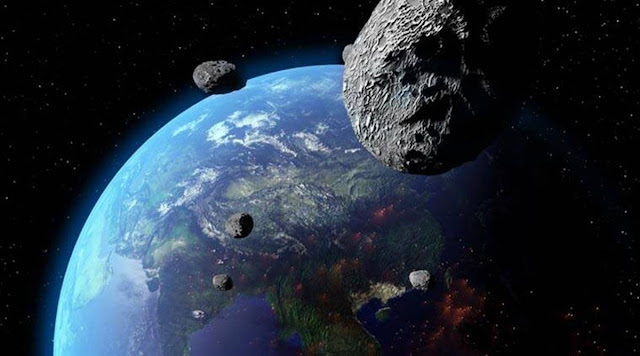Recently, NASA’s Jet Propulsion Laboratory (JPL) published a report that stated five asteroids will approach the Earth this weekend as well as Monday.
The JPL is a research development lab at the California Institute of Technology.
The NASA lab discovered extraterrestrial objects via the Asteroid Watch dashboard. According to the report, the asteroids fall under the category of near-Earth objects (NEO) that are not “potentially hazardous,” meaning we can admire the passing objects without fear of where they’ll land.
Asteroid 2022 QP4 zoomed past Earth early this morning at 15,534 mph at a close distance of 869,000 miles. The asteroid was 40 feet in diameter, roughly the size of the boss. NASA reported that this rock will reach Mars on December 31, 2022.
There’s also asteroid 2022 QQ4 which is much larger than the former. This one is 110 feet in diameter and will approach the Earth at a distance of 3,690,000 miles on August 27. The JPL clocked in this puppy at 15,534 mph. And, even more interestingly, asteroid 2022 QQ4 will return to the Earth in August of 2131.
Three Asteroids Will Approach Earth in Next Three Days
Tomorrow, on August 28, asteroid 2022 QP3 will approach the Earth from a distance of 3,420,000 miles. Similar to QQ4, this asteroid is about the size of a large airplane at 100 feet in diameter.
Next on the five-asteroid forecast is asteroid 2022 QX4 which is the largest of the group yet. Clocking in at 140 feet, NASA still considers this rock to be the size of a large airplane… but one that’s flying through space at 18,000 mph.
Asteroid 2022 QX4 will approach the Earth on Monday, August 29 at a distance of over 1,140,000 miles. This one will also return in September 2026.The final of the next five asteroids is asteroid 2017 BU which is another 100-footer. Like QX4, this one will approach the Earth on August 29.
Although, it will be a little further out, traveling at a distance of 3,760,000 miles and a speed of 15,500 mph.
Reference(s): NASA JPL



When you write an article like this for public consumption please tell us which area of the sky to look for them. i.e. near the handle of the big dipper, by Orion's belt etc.
…and including the date of the original source would stop people blindly reposting stuff that's over 6-years old (though not the case with this one) On JPL site it shows the size, closest distance and dates from 8/29 through 9/1